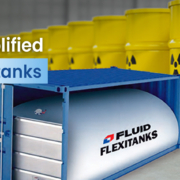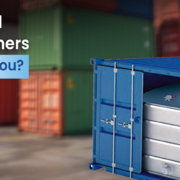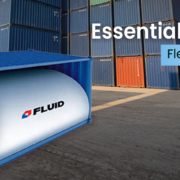Why Chemical Exporters Trust Fluid Flexitanks for Safe, Efficient Deliveries
Rising Demand and Innovation in Chemical Bulk Transport
Global demand for chemical bulk transport is growing at an unprecedented rate. According to a 2025 report by DataIntelo, the flexitank market for oils and chemicals is projected to reach USD 2.3 billion by 2030, growing at a CAGR of over 18%. The shift is driven by exporters seeking safer, cleaner, and more cost-efficient ways to move non-hazardous chemicals across long distances.
Traditional shipping methods, such as ISO tanks, drums, and IBCs, are being gradually replaced by flexible, high-capacity bulk liquid transport solutions. Among these, Fluid Flexitanks has emerged as a trusted name for exporters around the world, ensuring every drop of product reaches its destination safely and efficiently.
Challenges in Chemical Bulk Transport
Shipping chemicals requires precision, safety, and compliance. Exporters face several challenges:
- Contamination risks: Reusable containers often retain residues from previous loads.
- High logistics costs: ISO tanks require cleaning, return freight, and depot maintenance.
- Handling complexity: Traditional packaging demands labour-intensive loading and unloading.
- Limited payload: Drums and IBCs use extra space, reducing cost efficiency.
In an industry where delays or contamination can lead to significant financial losses, exporters are turning to Fluid Flexitanks, a solution that merges innovation with reliability.
Why Flexitanks Are the Preferred Choice for Bulk Chemical Transport
✅ 1. Maximum Payload Capacity
A single flexitank can carry up to 24,000 liters of non-hazardous chemicals, almost 30% more volume than drums or IBCs in the same 20-foot container. This translates to fewer shipments and reduced per-unit transport costs, which is a major advantage for high-volume exporters.
✅ 2. Single-Use, Contamination-Free Design
Each Fluid Flexitank is brand new, ensuring zero contamination risk. Unlike reusable ISO tanks, they do not require cleaning or sterilisation, making them ideal for sensitive or high-purity chemical products.
✅ 3. Lower Operational Costs
Flexitanks are a one-way cost system; after discharge, they can be recycled, saving on return freight and depot storage. The simplified logistics chain improves turnaround time and reduces administrative overhead.
✅ 4. Compatibility and Strength
Made with multi-layered polyethylene and polypropylene, Fluid Flexitanks are resistant to many chemical formulations, including lubricants, base oils, and emulsions. Their seamless construction reduces the risk of abrasion and rupture during long-distance travel.
✅ 5. Environmentally Responsible
Each flexitank is made from fully recyclable materials that minimize waste. By cutting return trips and reducing packaging materials, Fluid Flexitanks support sustainability goals in modern supply chains.
Engineering That Builds Trust
At the core of Fluid Flexitanks’ success lies superior engineering. Every flexitank undergoes rigorous QC testing, from raw materials like PE film and valves to final-stage assembly. The in-house testing process ensures:
- Tensile strength and stretch resilience
- Seam integrity and pressure resistance
- Chemical compatibility and leak-proof assurance
Fluid Flexitanks also comply with FDA, BGA, and CIQ regulations, making them ideal for chemical and food-grade applications alike.
As a leading Flexitank manufacturer in India, the company’s focus on continuous improvement, safety, and material innovation positions it as a preferred partner for exporters across Europe, the Middle East, and Asia-Pacific.
Safety and Compliance: A Non-Negotiable Factor
Chemical logistics demands adherence to strict safety protocols. Fluid Flexitanks are engineered with safety valves, air vents, and anti-burst reinforcements that protect against pressure surges. Their flexible design adapts to varying densities and viscosities of liquids such as lubricants, surfactants, and emulsions.
Additionally, their multi-ply construction prevents leaks even in challenging maritime conditions. Combined with strong technical documentation and compliance support, Fluid Flexitanks offer exporters a complete, worry-free solution for chemical bulk transport.
Market Trends: Why Exporters Are Switching to Flexitanks
According to logistics industry insights from 2025, more than 65% of chemical exporters in emerging economies have begun shifting from drums and ISO tanks to flexitanks. The reasons are clear:
- 20–30% cost reduction per shipment
- Faster loading/unloading with lower manual handling
- Better space utilisation in 20-foot containers
- Reduced carbon footprint in global transport
For many exporters, the switch to Fluid Flexitanks has translated into improved margins, safer shipments, and simplified logistics operations.
Make Every Shipment Count – Choose Fluid Flexitanks
In the competitive world of chemical exports, product safety and cost efficiency are critical. Fluid Flexitanks provide both.
As an experienced Flexitank manufacturer in India, we ensure every product is engineered to handle the most demanding bulk liquid transport requirements.
If you want to reduce operational costs, improve logistics efficiency, and ensure contamination-free deliveries, it’s time to trust Fluid Flexitanks, where reliability meets innovation.
FAQs
Q1: Are Flexitanks safe for aggressive or hazardous chemicals?
A: Flexitanks are specifically designed and certified for the safe bulk transportation of non-hazardous liquid chemicals, such as industrial lubricants and liquid fertilisers. Hazardous materials require specialised, high-pressure ISO tanks due to strict international regulations.
- How do Flexitanks contribute to a chemical exporter’s sustainability goals?
A: Flexitanks are recyclable and significantly reduce the need for secondary packaging, like wooden pallets. Their single-use design also eliminates the substantial carbon footprint associated with cleaning and returning rigid tank containers across long distances.
Q3: Do Flexitanks require specialised equipment or containers for use?
A: No, Flexitanks are designed to fit seamlessly into any standard 20-foot dry van shipping container, instantly converting it into a secure, single-use liquid carrier. Minimal, easy-to-use equipment is needed for the fast loading and discharge process.
Q4: What market indicators show that Flexitanks are a long-term, reliable solution?
A: The global market for Flexitanks in the chemical sector is projected to reach USD 3.66 billion by 2033, growing at a CAGR of 16.4%. This robust growth reflects authoritative industry commitment and trust in the technology’s long-term viability.











